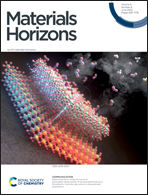Phonon anharmonicity in binary chalcogenides for efficient energy harvesting
Abstract
Thermoelectric (TE) materials have received much attention due to their ability to harvest waste heat energy. TE materials must exhibit a low thermal conductivity (κ) and a high power factor (PF) for efficient conversion. Both factors define the figure of merit (ZT) of the TE material, which can be increased by suppressing κ without degrading the PF. Recently, binary chalcogenides such as SnSe, GeTe, and PbTe have emerged as attractive candidates for thermoelectric energy generation at moderately high temperatures. These materials possess simple crystal structures with low κ in their pristine forms, which can be further lowered through doping and other approaches. Here, we review the recent advances in the temperature-dependent behavior of phonons and their influence on the thermal transport properties of chalcogenide-based TE materials. Because phonon anharmonicity is one of the fundamental contributing factors for low thermal conductivity in SnSe, Sb-doped GeTe, and related chalcogenides, we discuss complementary experimental approaches such as temperature-dependent Raman spectroscopy, inelastic neutron scattering, and calorimetry to measure anharmonicity. We further show how data gathered using multiple techniques helps us understand and engineer better TE materials. Finally, we discuss the rise of machine learning-aided efforts to discover, design, and synthesize TE materials of the future.



 Please wait while we load your content...
Please wait while we load your content...